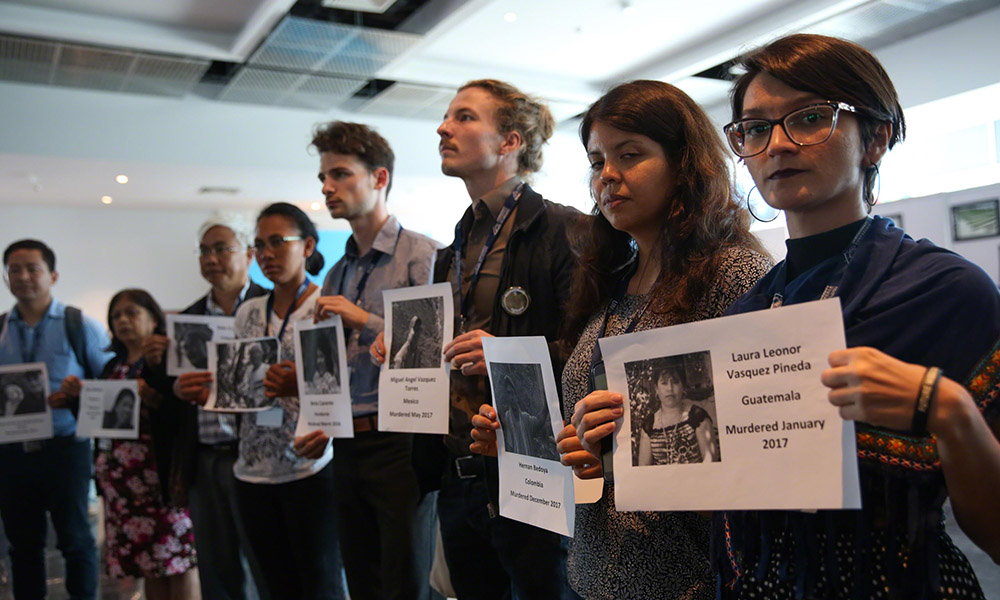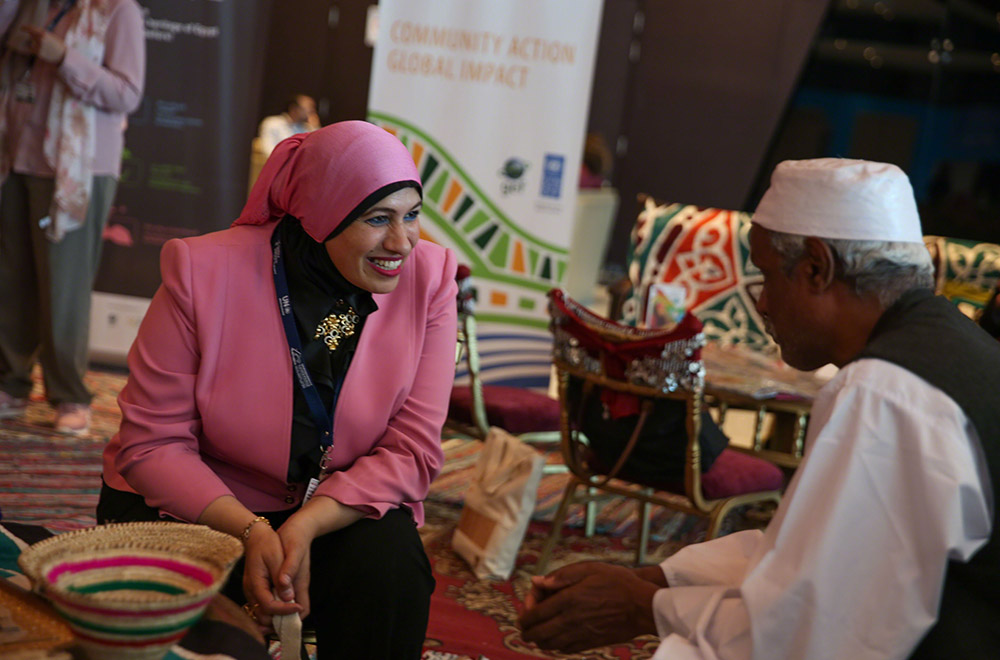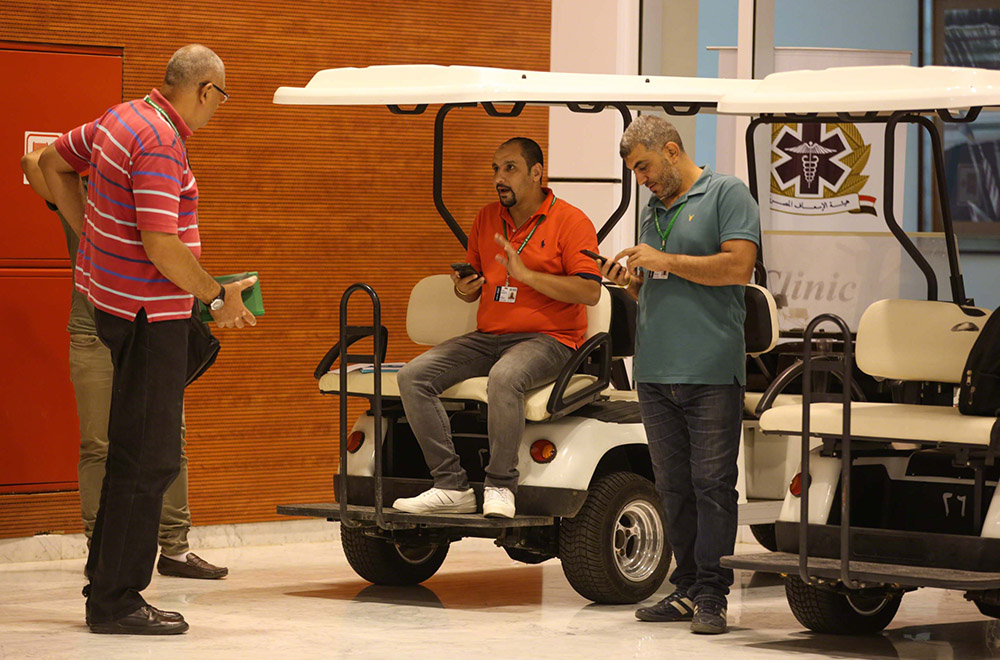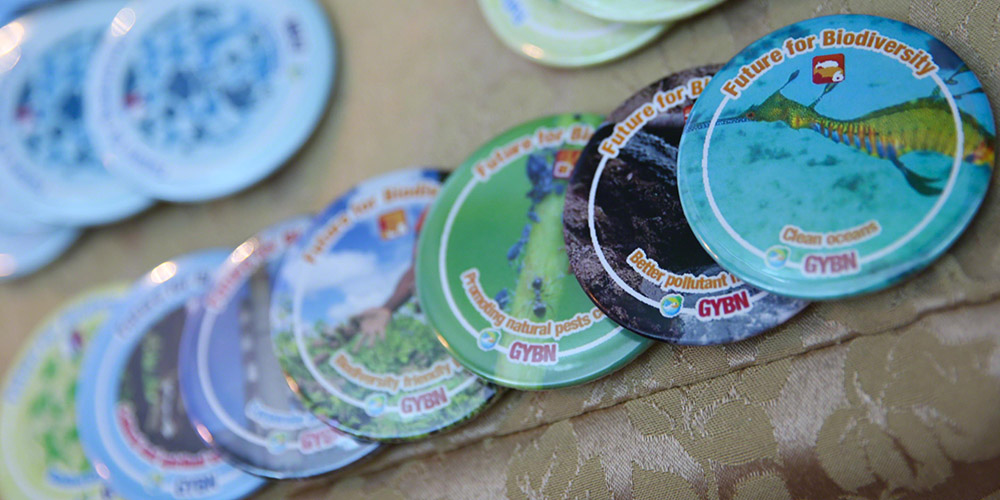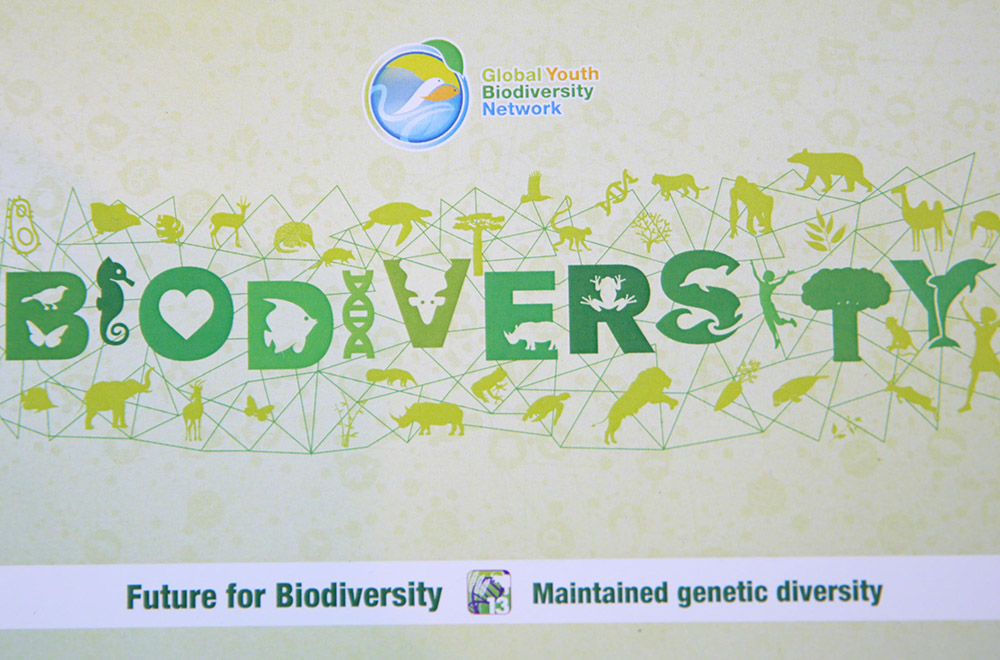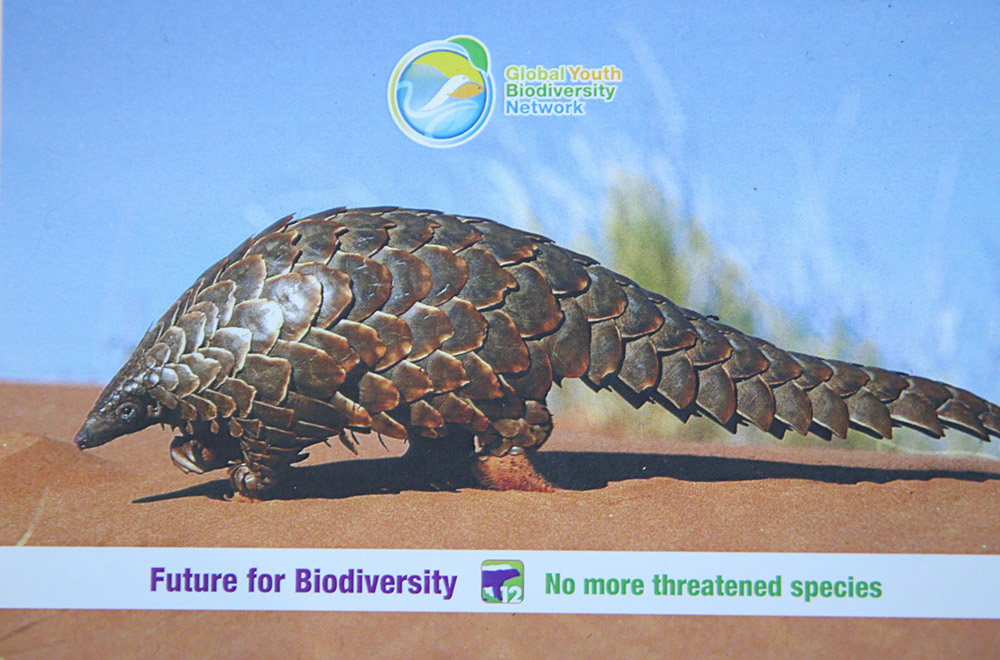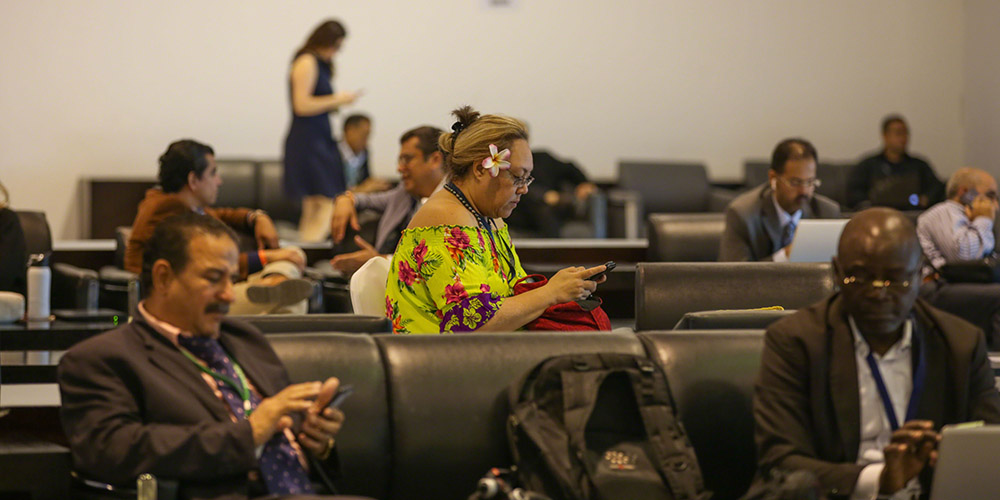Summary

The following events were covered by IISD Reporting Services on Wednesday, 21 November 2018:
Photos by IISD/ENB | Kiara Worth
For photo reprint permissions, please follow instructions at our Attribution Regulations for Meeting Photo Usage Page
Tackling Common Challenges in National Biodiversity Strategies and Action Plans (NBSAPs) Implementation – Examples from Japan Biodiversity Fund’s (JBF) Pilot Projects
Presented by the CBD Secretariat
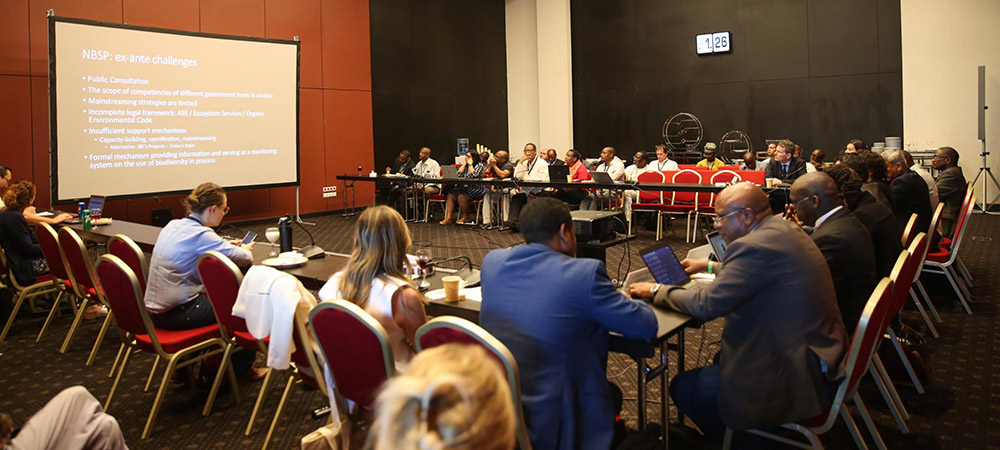
The side event showcased challenges related to the implementation of NBSAPs, provided examples of the implementation of JBF small-scale, targeted pilot projects, and shared lessons learned.
Nadine Saad, Convention on Biological Diversity (CBD) Secretariat, moderated the event and outlined the JBF's main objectives of supporting developing countries to improve capacity to revise their NBSAPs in accordance with the Strategic Plan for Biodiversity 2011-2020, as well as strengthening capacity to implement the CBD. She noted key implementation challenges include mainstreaming and use of spatial data, as well as the widespread absence of socio-economic data.
Daniel Ortega Pacheco, ESPOL Polytechnic University, presented Ecuador’s pilot project, noting the NBSAP-related challenges since the project’s inception, including an incomplete legal framework on ecosystem services and access and benefit sharing (ABS). Pacheco stressed that his university was selected for this project based on its teaching methods, which address social needs, and are therefore in line with the project’s aims. He outlined the objectives of the project including: integrating spatial and socio-economic data in planning and monitoring of biodiversity; facilitating communication between sectors for better integration of biodiversity into national policies; and documenting the NBSAP’s preparation process. Pacheco underscored the need to focus on the causal relationship between conservation policies and health and concluded that a future challenge would be the engagement of businesses in the development of bioeconomy.
Eric Wikramanayake, Environmental Foundation Limited (EFL), Sri Lanka, reported that EFL received a grant for the project to conduct a spatial analysis of biodiversity conservation priorities for Sri Lanka. He showcased the objectives of the project, including the integration of conservation priorities into the Government of Sri Lanka’s development plans and capacity building within the government for improved biodiversity planning. He also noted the use of a geographic information system (GIS) for prioritizing biodiversity conservation areas, noting that no primary data were collected. He concluded that the project helped with trust building with international organizations, such as the UN Development Programme, and that the JBF grant was a catalyst to achieve longer-term conservation success.
Samuel Ndayiragije, Director-General, Environment Protection Office, Burundi, shared Burundi’s experience with the JBF. He recognized the complexity of this process and noted that, to be effective, considerable national coordination is required. He closed his remarks expressing the commitment of Burundi to enhance synergies between local and global processes on biodiversity conservation.
The side event continued with representatives from Malawi, Botswana and Ethiopia presenting on their respective JBF-funded NBSAP projects.
Abisha Mapendembe, UN Environment World Conservation Monitoring Centre, described the JBF’s pilot project, which aims to: produce an initial spatial biodiversity assessment; support in-country capacity for use of spatial biodiversity and socio-economic information; integrate biodiversity into national development; and explore ways to scale up this approach to other countries.
Mphatso Kalemba, Ministry of Natural Resources, Energy and Mining, Malawi, highlighted project-related experiences in his country, showcasing the steps that Malawi has taken so far, including: the development of a stakeholder catalogue; the establishment of a task team on GIS, policy and documentation; and the development of data governance protocols. She showcased ecosystem maps and noted that project activities must be aligned with biodiversity policies, stressing the importance of guidance about the nature of data collected.
Masego Dhliwayo, Okavango Research Institute, University of Botswana, showcased the objectives of the project in Botswana, including contributing to the development of the Sixth National Report and building local capacity in spatial biodiversity assessment. He noted that steps taken for implementation of the project included a workshop with stakeholders at inception, a dataset review workshop and an assessment workshop, which focused on assembling data building blocks to produce an initial national biodiversity assessment.
Misikire Tessema, Ethiopia Biodiversity Institute, highlighted the need for spatial maps of biodiversity priority in Ethiopia to impact policy, and that the building blocks for data collection were focused on ecosystems, protected areas and ecological conditions. He highlighted the contribution of stakeholders and their expertise, saying that one of the expected outcomes is identifying policies, strategies and national initiatives.
In the ensuing discussion, the panelists answered questions on the quality of national and global data and the projects’ impact on indigenous communities.

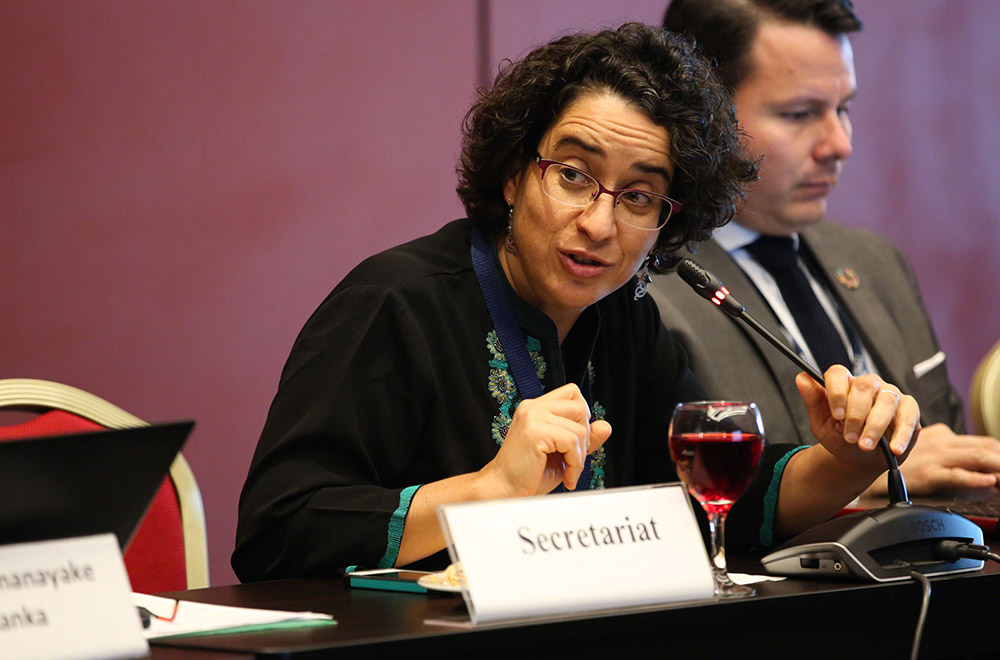
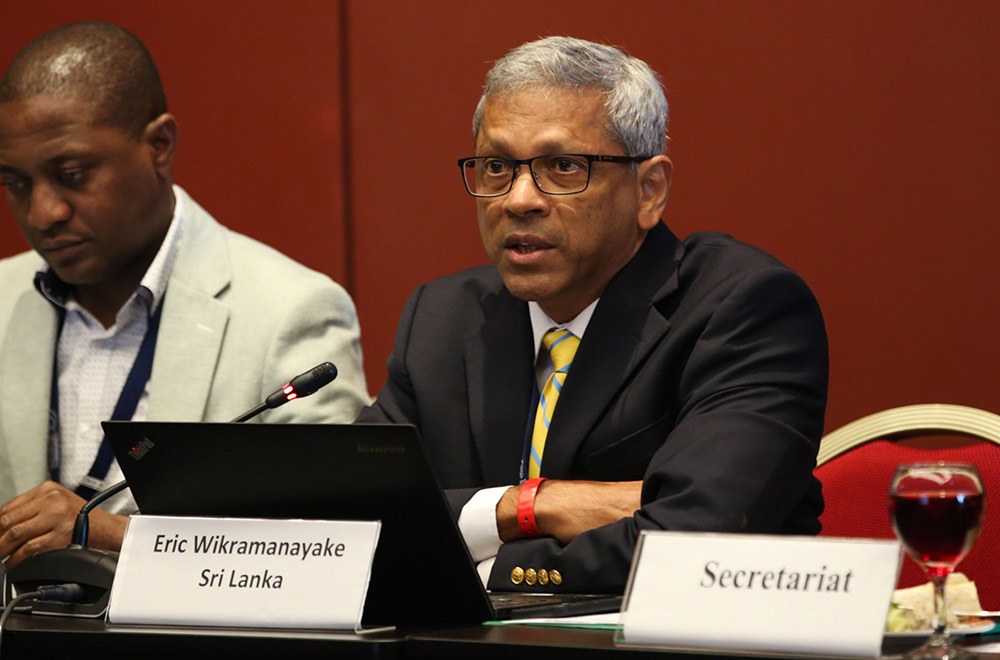
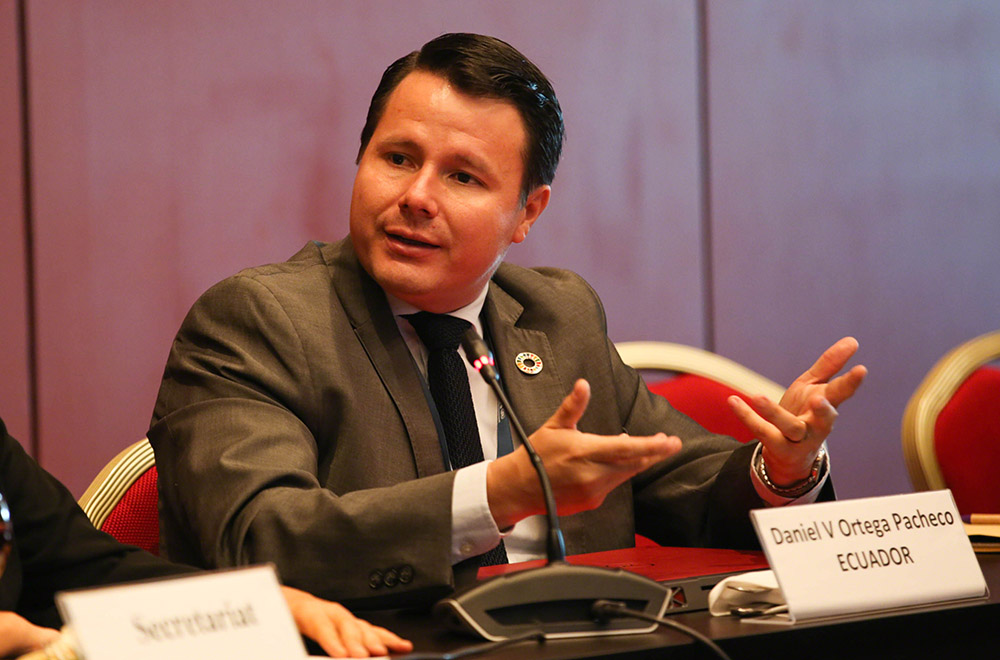
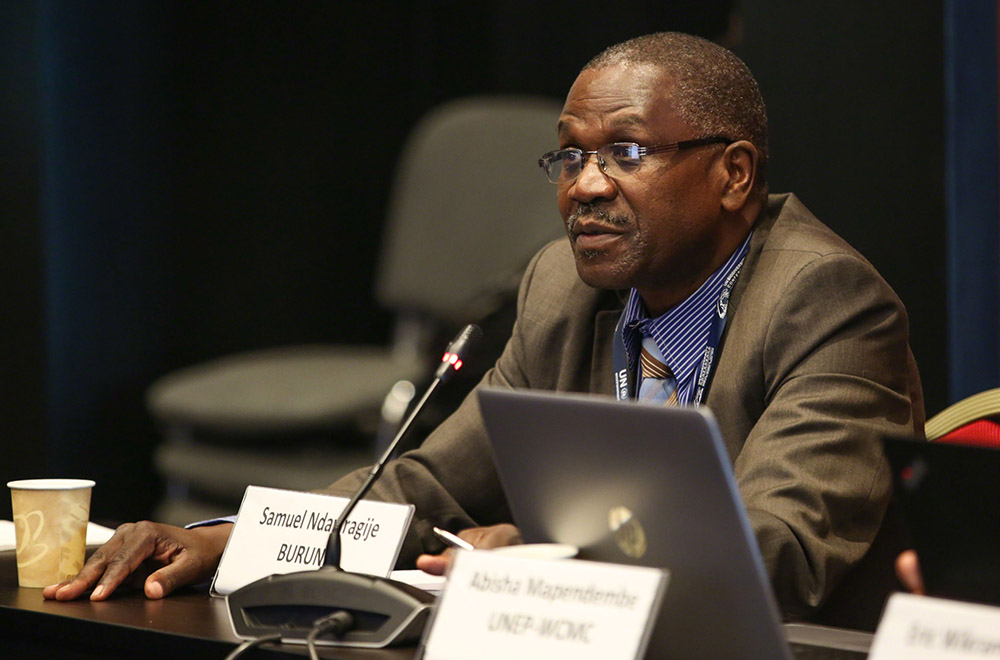

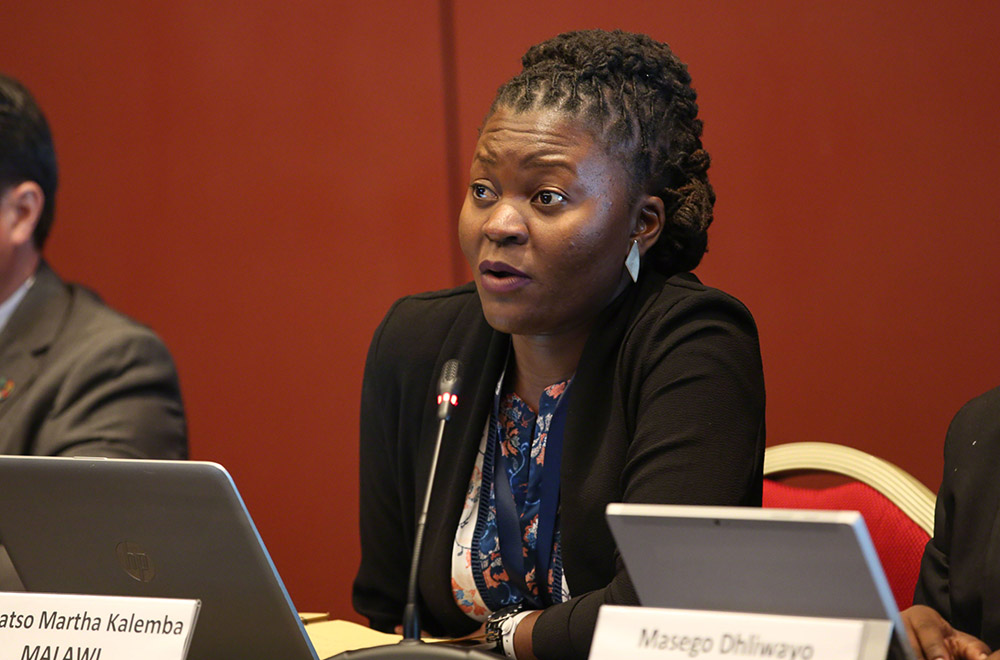
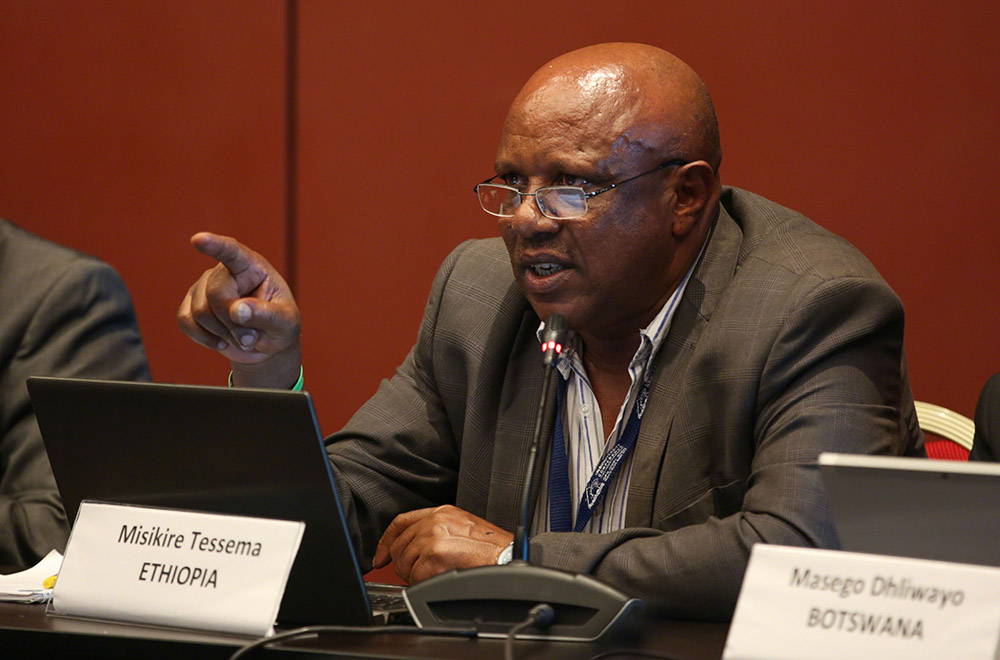
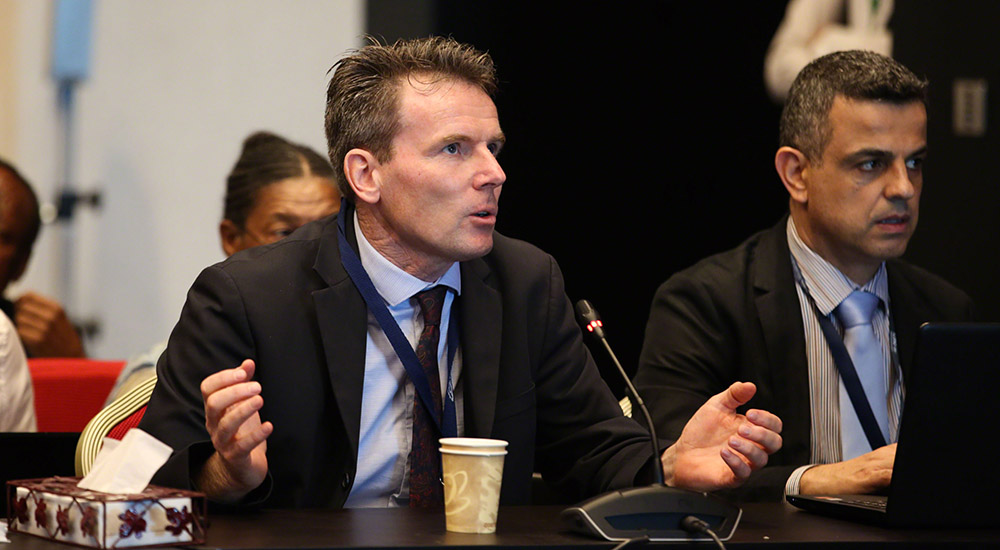
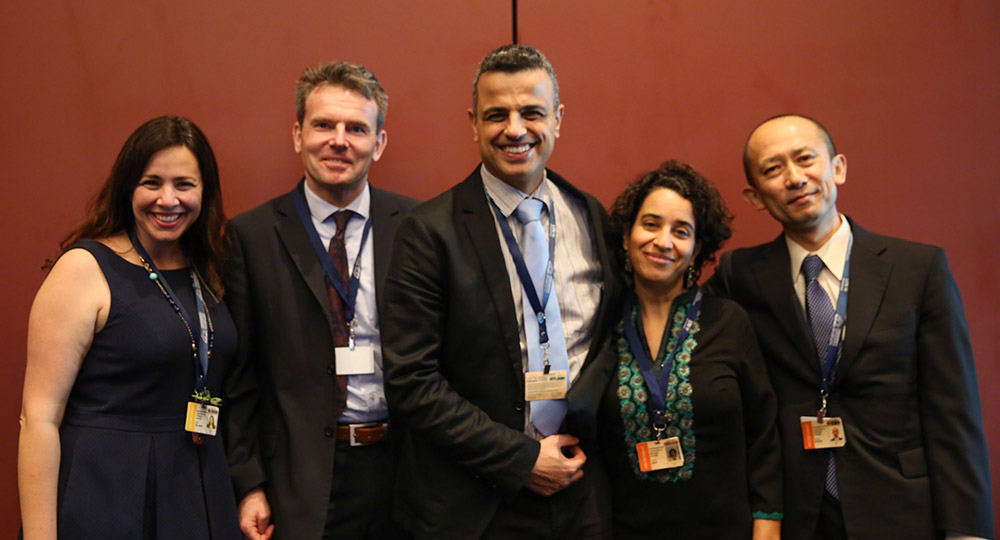
Sustainable Ocean Initiative Global Dialogues with Regional Seas Organizations and Regional Fisheries Bodies to Accelerate Progress for Achieving the Aichi Biodiversity Targets: Key Outcomes
Presented by the CBD Secretariat
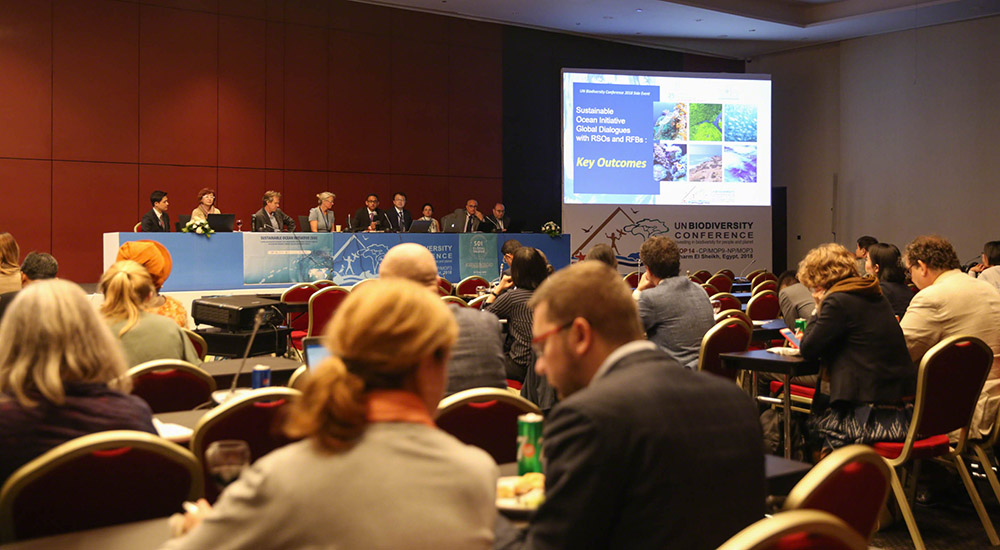
This side event informed Parties and stakeholders on the outcomes of the 2nd meeting of the Sustainable Global Dialogue (SOI) with Regional Seas Organizations (RSOs) and Regional Fisheries Bodies (RFBs) to accelerate progress for achieving the Aichi Biodiversity Targets and the Sustainable Development Goals (SDGs). Panelists focused on: marine and coastal biodiversity; the Strategic Plan for Biodiversity 2011-2020 and its targets; and the SDGs.
Alain de Comarmond, Ministry of Environment, Energy and Climate Change, Seychelles, chaired the event. In his opening remarks, he recalled that the Dialogue received financial support from the Governments of the Republic of Korea and Japan and the European Commission, and was organized in collaboration with UN Environment, the Food and Agriculture Organization of the UN (FAO), the Secretariat of the North East Atlantic Fisheries Commission, the Secretariat of the Nairobi Convention, IUCN- Commission on Ecosystem Management (CEM)-Fisheries Expert Group, and the Global Ocean Biodiversity Initiative.
Young-Dawng Moh, National Marine Biodiversity Institute of Korea (MABIK), reinforced the Republic of Korea’s commitment to marine conservation and ocean governance, and announced the next SOI in his country in 2020, inviting all stakeholders to take part.
Jorid Hammersland, Ministry of Environment and Energy, Sweden, highlighted Sweden’s role in facilitating national implementation of SDG 14 (life below water), including through: the 2017 UN Ocean Conference; its support for the SOI; and reflections on the development of regional ocean governance. She also invited delegates to Sustainable Ocean Day at COP 14.
Jihyun Lee, CBD Secretariat, noted that participants of the 2nd meeting of the SOI identified options to enhance cooperation among RSOs and RFBs to enhance the synergies between the Strategic Plan for Biodiversity 2011-2020 towards achieving the Aichi Biodiversity Targets and the relevant SDGs. Lee emphasized that the Dialogue identified the need for capacity-building activities in support of cooperation at the regional level and called for continued financial support from Parties to deliver global targets.
Khalil Attia, UNEP/Mediterranean Action Plan - Specially Protected Areas Regional Activity Centre (UNEP/MAP-SPA/RAC), spoke on the cohesion among 2020 Aichi Biodiversity Targets and the SDGs. He shared the Mediterranean experience in cross-sectoral cooperation at the regional scale for the achievement of SDG 14 and the Aichi Targets, notably Aichi Targets 6 and 11, through coordination and synergy among regional seas conventions and regional fishery bodies. This long-term collaboration among UNEP/MAP and FAO-GFCM has been highlighted at various global and regional fora, including the SOI Global Dialogue and SOI regional-scale workshops, as a model that can be highly instructive to other regions.
Michele Ameri, UN Division for Ocean Affairs and the Law of the Sea, spoke on the potential contribution of SOI Global Dialogues to the SDGs and the processes related to the Intergovernmental Conference on an international legally binding instrument under the UN Convention on the Law of the Sea on the conservation and sustainable use of marine biological diversity of areas beyond national jurisdiction (BBNJ). He suggested that SOI Dialogues can be useful for: the promotion of integrated, multisectoral approaches, including at the national level; exchange of information and best practices; increased cooperation and coordination, where possible; and the promotion of participation in, and contributions to, relevant UN meetings.
Kim Friedman, FAO, spoke on SOI Global Dialogues and mentioned ways to strengthen RFBs in support of the SDGs. He suggested SOI Global Dialogues are particularly important for building relationships, noting that successful cooperation requires time, clarity and dialogue, which are essential to produce trust. This process, he mentioned, is time consuming but vital for effective collaboration.
Daniela Diz, Strathclyde Centre for Environmental Law and Governance, focused on the ecosystem approach and area-based management tools, highlighting growing pressures on oceans due to pollution and current wasteful development models. Describing the Ecosystem Approach to Fisheries Management, she highlighted the need for integrated management and said that marine spatial planning has been recognized in CBD decisions, which facilitates the adoption of this approach.
In the ensuing debate, Lee mentioned the need for more cooperation on capacity building and more work to coordinate mandates among organizations, including on how monitoring and data sharing can be improved. Friedman added that resources are limited and said that SOI brings together elements of biodiversity from other UN conventions. Ameri noted progress on informal consultations on the science-policy interface and a participant noted that all regulatory actors should start from the same scientific foundation, which dates back from the 1980s.
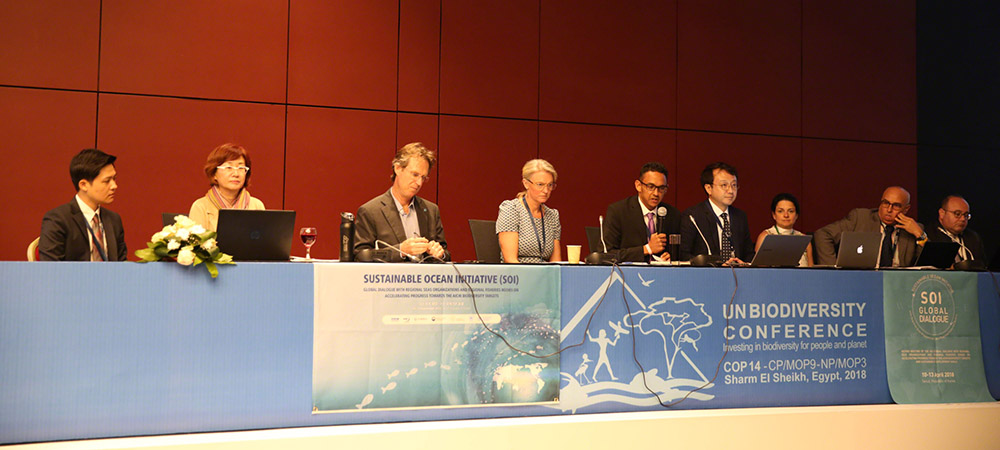

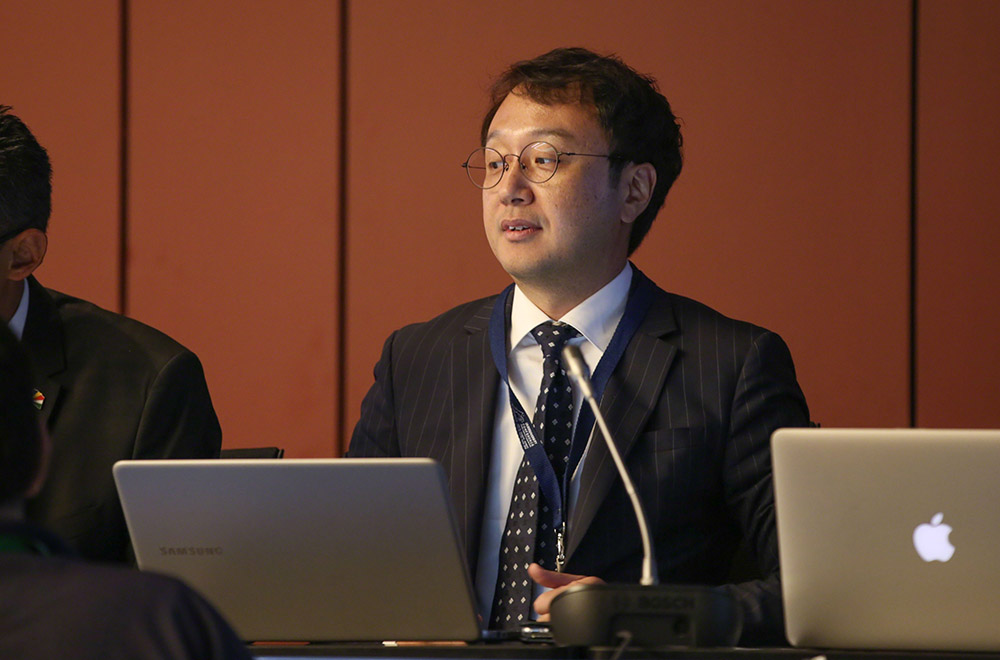
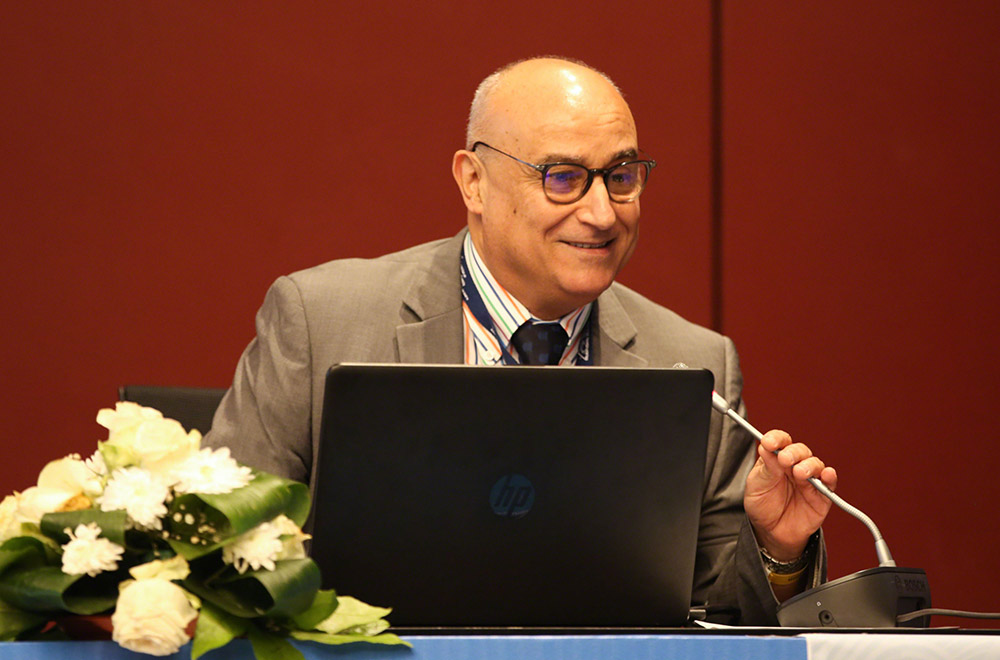
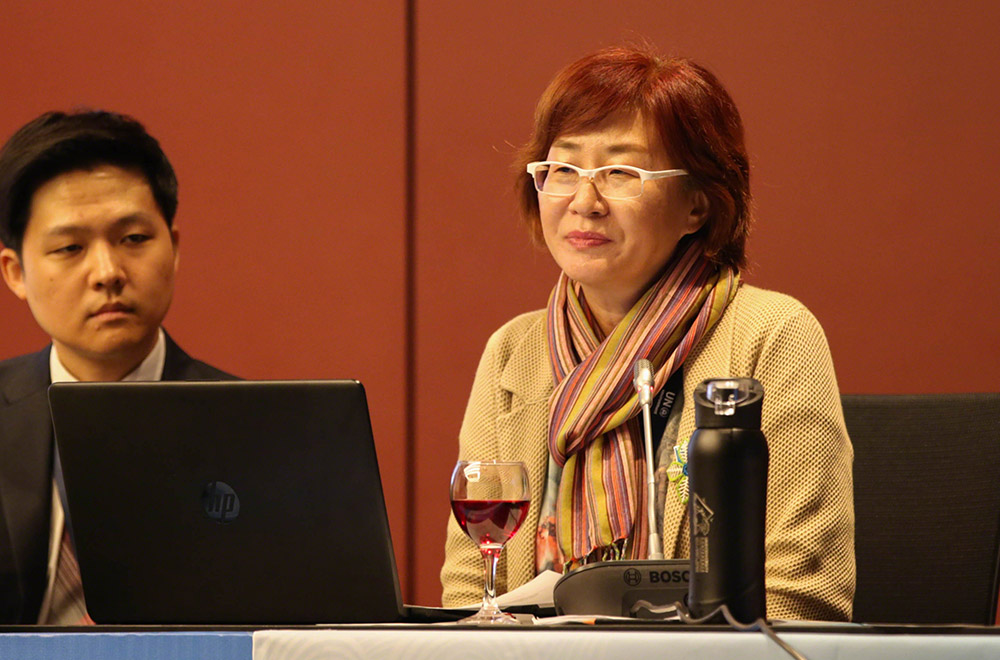
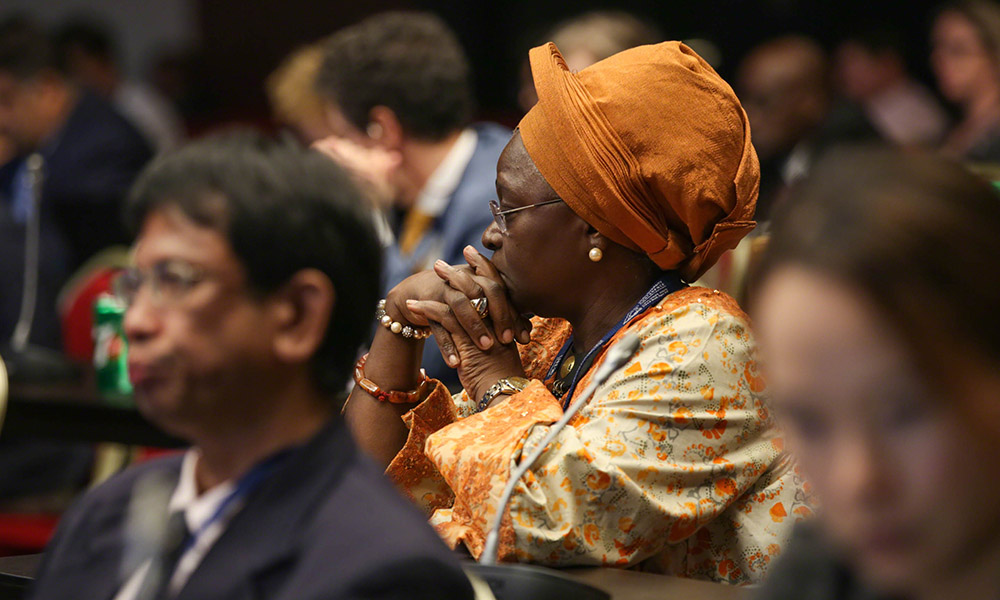
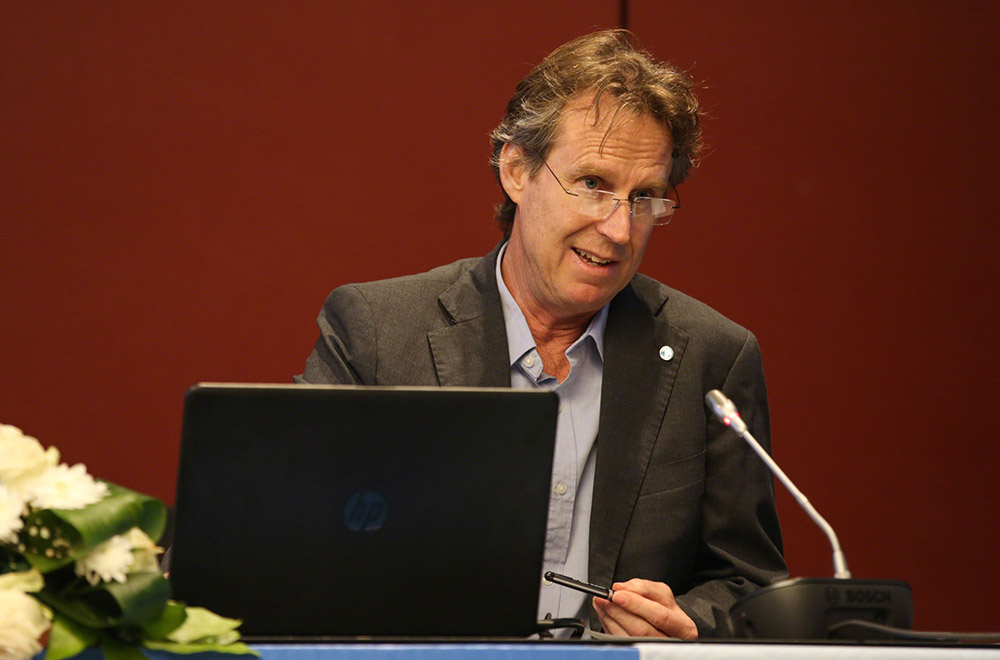

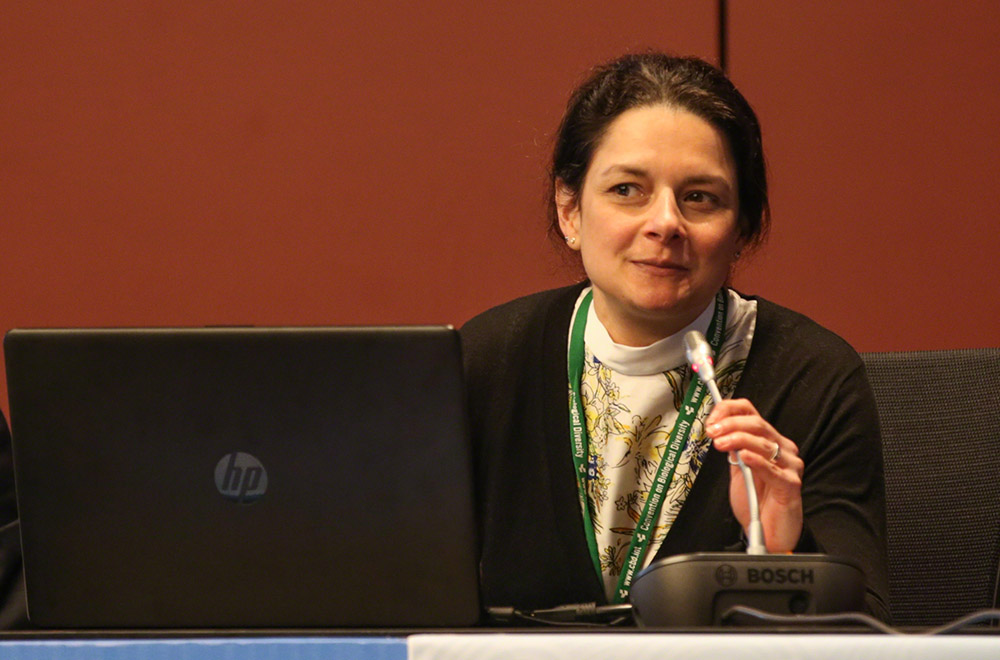
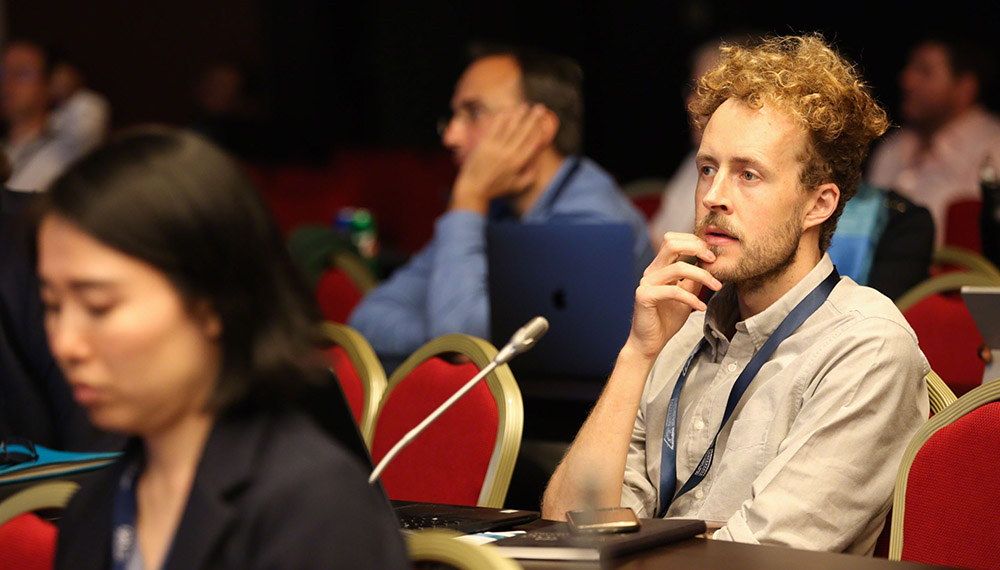
Ecological Compensation: an Attempt to Combine the Need for Development and to Halt the Loss of Biodiversity
Presented by the Nordic Council of Ministers

Posted by IISD Reporting Services on Wednesday, 21 November 2018
The side event on ecological compensation for combining the need for development and halting biodiversity loss featured presentations on: components of an effective decision-making framework; the usefulness of biodiversity offsets as an economic policy instrument for biodiversity conservation; the suitability of different habitat types for offsetting; and considerations for establishing an offsetting programme. Ecological compensation, also referred to as biodiversity offsetting, is the practice of compensating for ecological damage or loss caused by infrastructure projects and other development activities.
Christina Sörkvist, Ministry of Environment and Energy, Sweden, opened the event, noting that every construction project has an impact. She highlighted the Nordic Council of Ministers’ focus on best practices to prevent the loss of biodiversity.
Janne Kotiaho, University of Jyväskylä, Finland, described a decision-making process involving 15 operational design decisions in planning biodiversity offset projects. He outlined the key decision-making components as including, inter alia:
- objectives related to adherence to the mitigation hierarchy (avoid-mitigate-restore-offset), definition of no-net-loss (NNL), and degree of NNL;
- the space, time and biodiversity axes of ecological reality; and
- the impact of different multipliers that may increase the area to be restored or protected to produce the offsets, and that arise from factors, such as additionality (e.g., disallowing ‘double-counting’), time discounting (future gains are less valued than immediate ones), and leakage (e.g., relocating vs. eliminating pressures).
He stressed that some factors are subjective and that the concept of no-net-loss is illusory. He noted that following a clear decision-making process will facilitate transparent evaluation of offsetting plans and that the decisions will have impacts on credibility, options, multipliers and costs.
Katia Karousakis, Environment Directorate, OECD, explained that biodiversity offsetting is an economic policy instrument for biodiversity conservation and sustainable use. She highlighted its usefulness as a means to generate revenue, noting an estimate of USD 4.8 billion in 2016 for biodiversity offsets from 45 programmes worldwide. She described the applicability of offsets to different sectors and ecosystems, noting the relevance of offsets to mainstreaming biodiversity. She emphasized capacity needs for: experts to select and apply metrics and indicators; market support services; and enabling conditions, such as regulatory approaches that require developers to compensate for environmental damages.
Karousakis stressed the need to clearly define goals and objectives and to establish effective monitoring and reporting to ensure the ability of measuring success, noting inadequate performance in this area in the past. For new initiatives, she recommended: starting with pilot programmes; testing; reviewing; adapting; and then scaling up.
Kristiina Niikkonen, Ministry of Environment, Finland, discussed the suitability of different habitat types to ecological compensation. She described a project in Finland that considered 99 habitat types, including both threatened and non-threatened types. On specific traits that may make compensation unsuitable, she highlighted, inter alia: species occurring on the site, location, and situations where the risk of failure in implementation of the compensation measure is too high. She explained that the project divided habitat types into three categories: suitable; success of compensation is uncertain; and not suitable to ecological compensation. Different subcategories included potential offsetting with:
- same or more rare habitat type;
- same habitat type;
- habitat degradation should be avoided, restoration is feasible;
- habitat degradation should be avoided, restoration is challenging;
- habitat cannot be degraded, restoration is feasible; and
- habitat cannot be degraded, restoration is not possible.
She noted that appropriate actions will depend on factors such as: reasons for increased extinction risk; habitat structure; habitat function; relative rarity and geographical distribution of habitat type; and availability and reliability of methods to improve ecological conditions.
Niikkonen also presented on a project related to ecological offsetting in environmental, nature conservation and natural resources law in Finland and the development of relevant policy instruments. She highlighted, inter alia: strong support among Finnish experts for ecological offsetting, along with awareness of its failures abroad; and trends elsewhere, including those involving one-offs, bio-banking and in-lieu fees. On moving into a bio-banking regime, she recommended a step-by-step approach to include: clear national guidelines; a pilot regime including a transparent internet-based information platform; and offsetting requirements in legislation and trading of credits.
During the ensuing discussion, moderated by Petter Mahrs, Environmental Protection Agency, Sweden, participants discussed: the distinction between classifying habitat types as inappropriate for offsetting versus simply banning development; development of a global framework on biodiversity offsetting through an IUCN working group; and national funding for the creation of offsetting programmes.
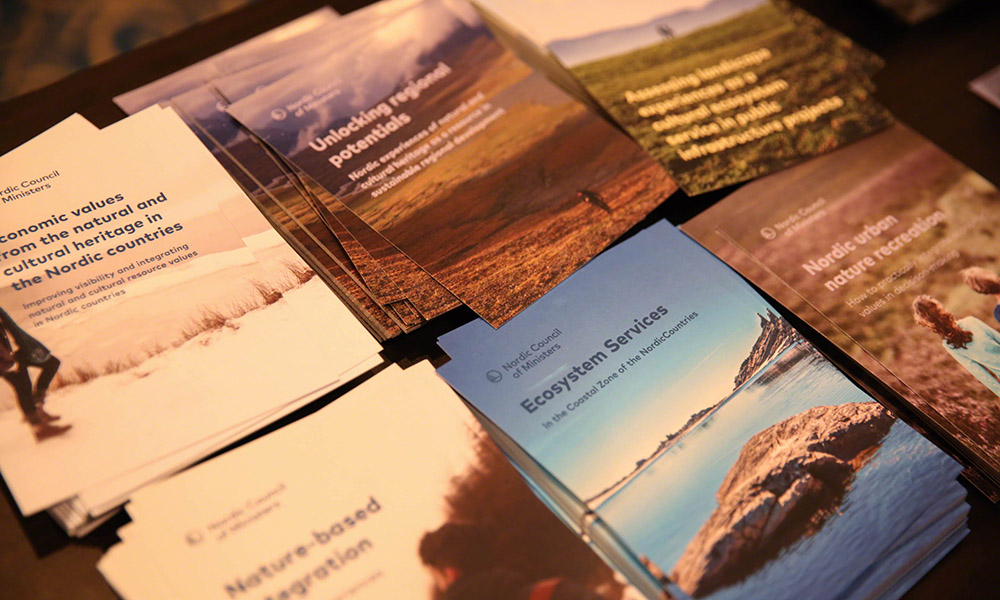
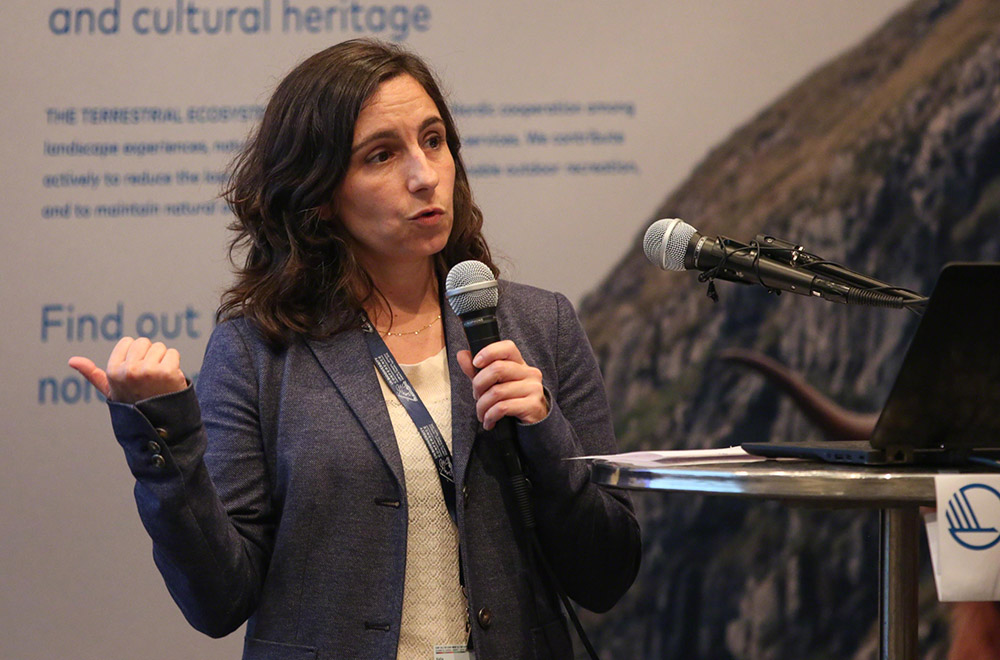
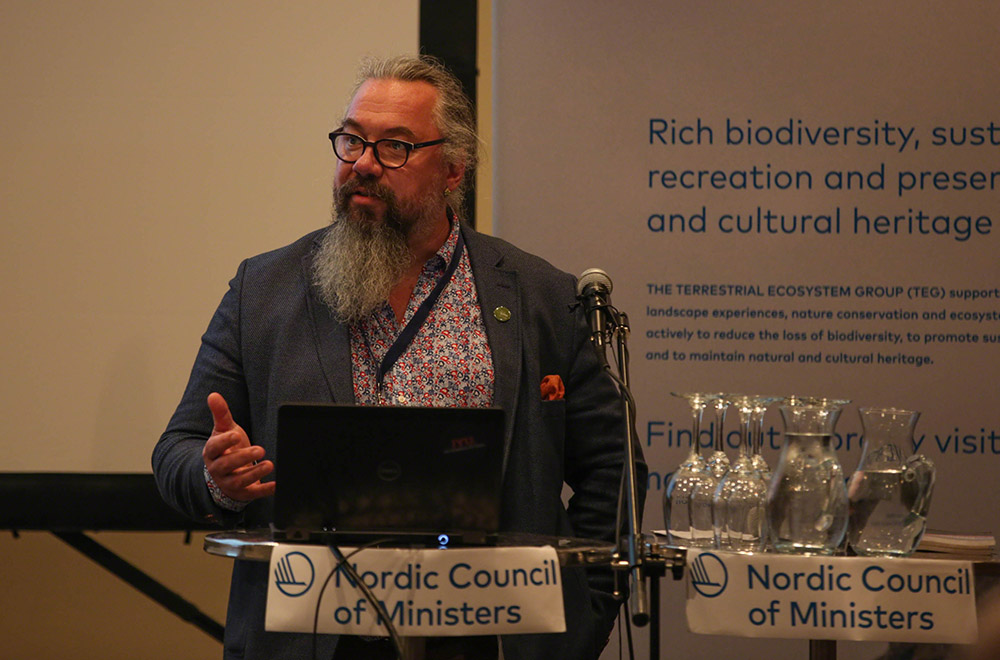
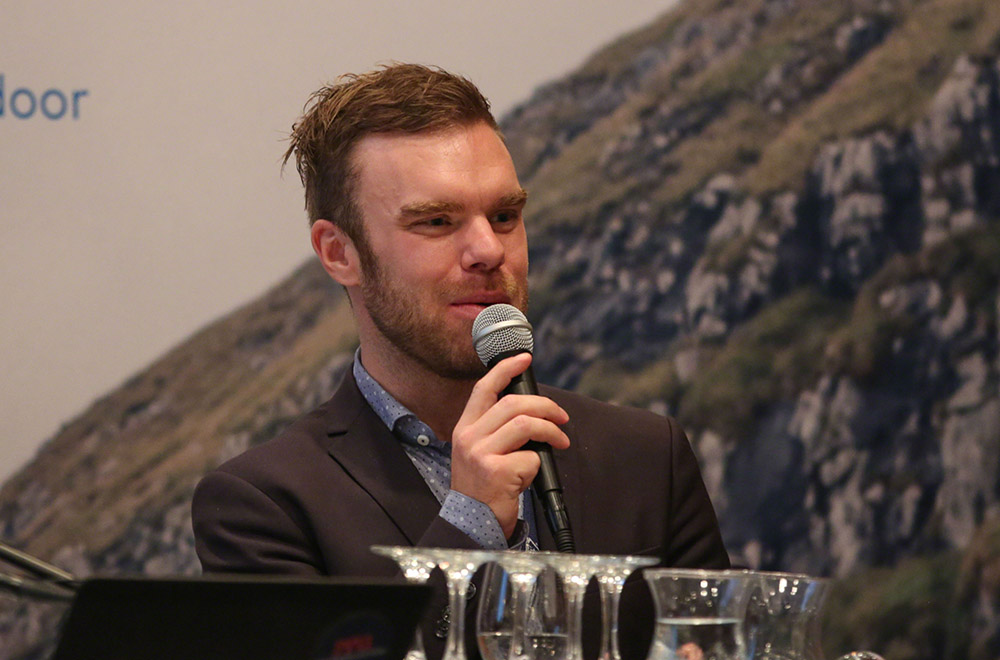
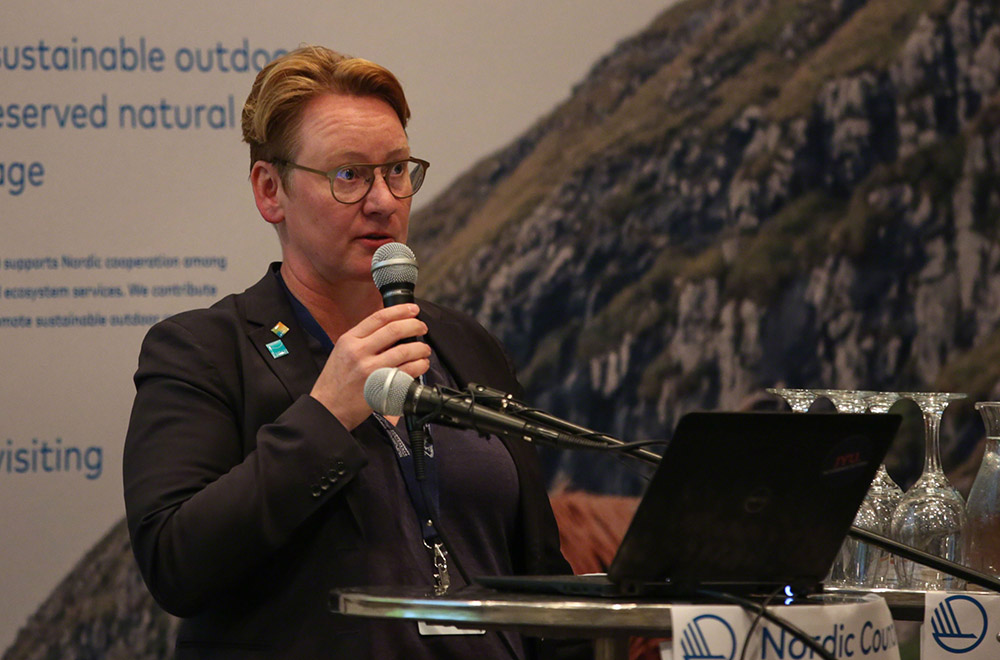

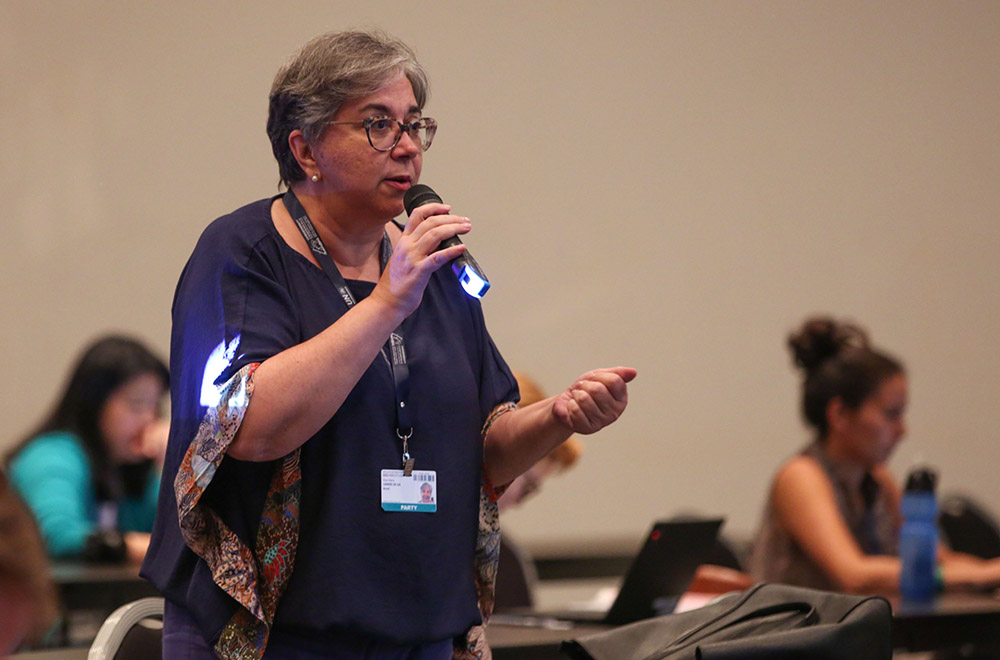
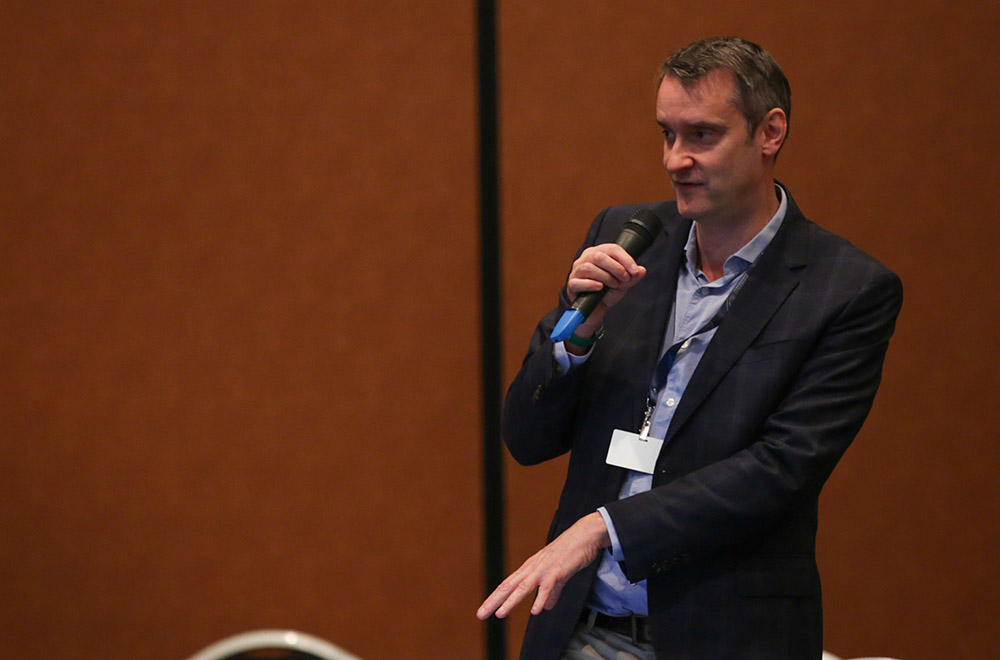
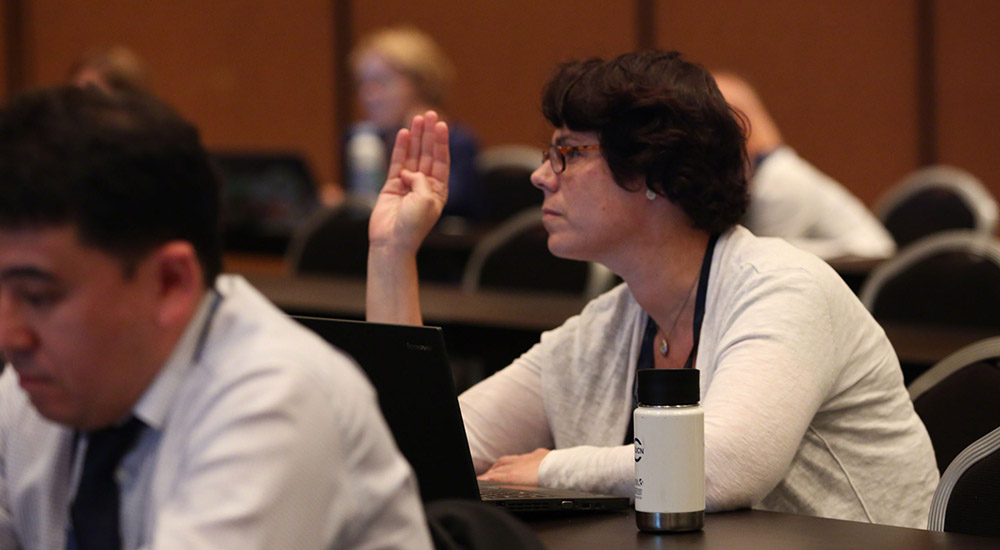
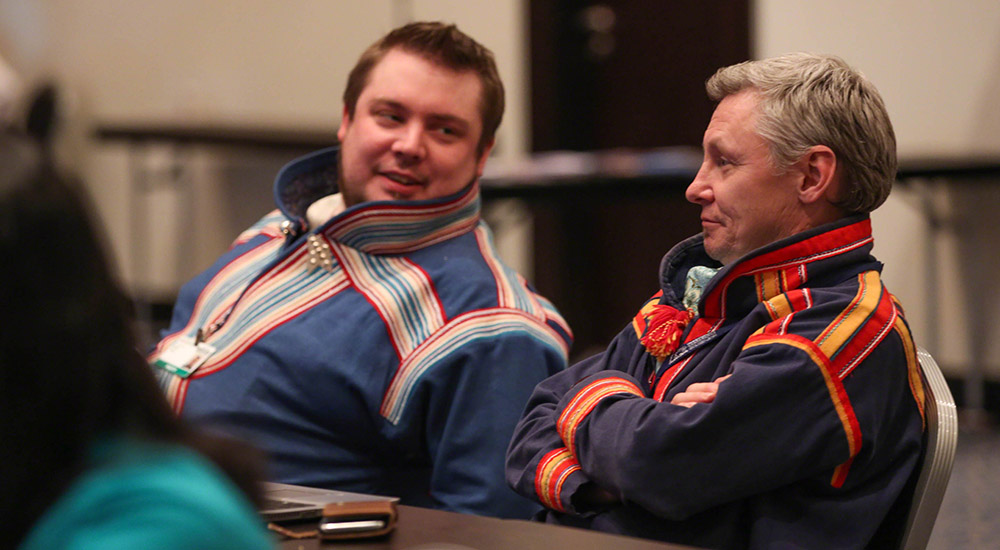
CONTACT
Sigga Jacobsen | SiggaJ@us.fo
Petter Mahrs | Petter.Mahrs@naturvardsverket.se
MORE INFORMATION
The Asia Protected Areas Partnership (APAP) – An Innovative Mechanism to Help Countries Achieve the Aichi Biodiversity Targets
Presented by the Ministry of Environment of the Republic of Korea, in collaboration with Korea National Park Service and the International Union for Conservation of Nature (IUCN)
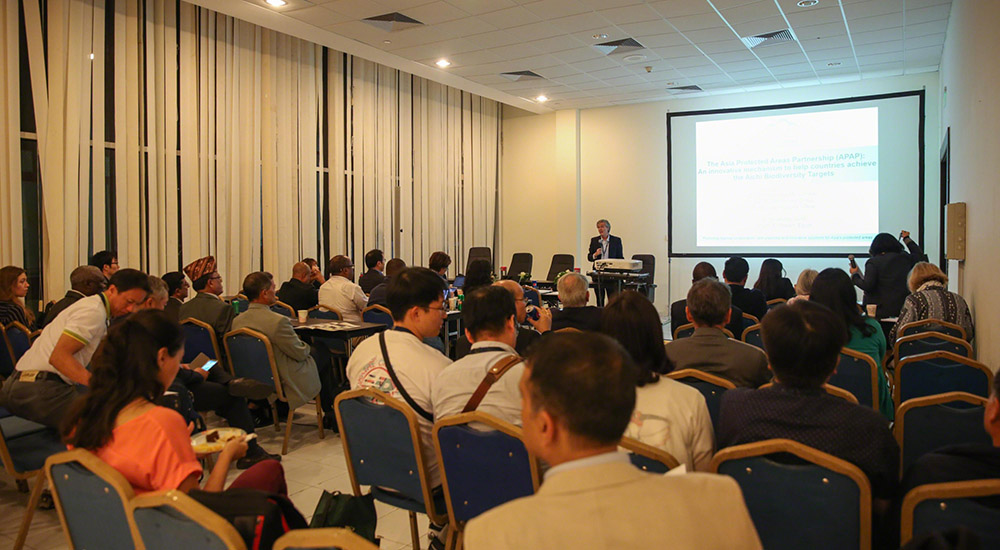
The side event shared lessons learned from APAP and explored the role of regional protected area partnerships in: fostering innovative management approaches of protected areas; addressing the increasing pressure on the areas; and achieving the Aichi Biodiversity Targets.
Soon-Hwan Hwang, Ministry of Environment, Republic of Korea, said that APAP has 17 members and has organized productive workshops sharing examples of protected areas management and policies. He said it was time to switch from quantitative to qualitative management and that partners’ commitment is needed to improve capacity for protected areas management. He urged other organizations to join APAP in a united endeavor to develop synergies.
Scott Perkin, IUCN Asia Regional Office, said that APAP is a voluntary network launched in 2014 to: provide a forum where Asian protected aresa agencies share experiences; enhance transboundary and regional cooperation; and promote best practices and innovative solutions to challenges facing Asia’s protected areas. He reported that membership has expanded and noted that APAP has the potential to help countries achieve the Aichi Biodiversity Targets.
Sagar Kumar Rimal, Ministry of Forests and Environment, Nepal, said that Nepal’s Department of National Parks and Wildlife Conservation aims to conserve the country’s major representative ecosystems and encourage scientific research for the conservation of genetic diversity. Rimal outlined the Department’s core values including species conservation, anti-poaching operation, and local people’s livelihood management. He noted that APAP can be strengthened through training modules on different aspects of protected areas management and the establishment of a cross-learning mechanism.
Win Naing Thaw, Ministry of Natural Resources and Environmental Conservation, Myanmar, spoke about Myanmar and theRegional Protected Areas Network, highlighting that Myanmar’s forest policy (1995) mandates an increase in protected areas to 5% of the country’s total land. On reasons for joining APAP, he underscored Myanmar’s willingness to learn best practices from other protected areas. Thaw noted the specific learning opportunities in the areas of good governance, management and community participation. Given that protected areas are not stand-alone but form networks and corridors, he said “we must bridge them to make a community of protected areas in the Asia region.”
Perkin then read a statement from the Ministry of Climate Change of Pakistan. He said that different events organized under APAP connect member organizations to learn from each other’s experiences. He highlighted ongoing challenges that hamper effective protected areas management including knowledge gaps, human-wildlife conflicts, weak institutional capacity and financial constraints. He suggested APAP could play a more active role in building the capacity of member organizations to use modern technologies to address common issues.
Issei Nakahara, Ministry of the Environment, Japan, noted that the first and second APAP technical workshops showed that local communities welcome the opportunity to have their voices heard on protected areas management, as well as the potential to enhance collaboration with the private sector.
Perkin presented both the objectives and findings of the Third APAP Technical Workshop on Human-Wildlife Conflict, which convened in Bhutan. He noted that conflicts can have negative impacts both on human interests and biodiversity, underscoring that there is no “silver bullet” or single approach for protected areas.
Hag-Young Heo, National Park Research Institute, Korean National Park Service, empathized that many countries are increasingly using the Management Effectiveness Evaluation (MEE), but mentioned that greater efforts will be required to meet CBD targets. On lessons from the 4th APAP Technical Workshop in June 2018 in his country, he pointed to a great interest in the IUCN Green List Standard among APAP members. Heo said multiple benefits of using the IUCN Green List have been identified, including improved protected areas management, greater international recognition and enhanced stakeholder engagement. On challenges to adopting the IUCN Green List, he noted the complex and time-consuming nature of the process, and the need for capacity building and funding support.
During the ensuing debate, Perkin mentioned that countries sometimes are reluctant to join APAP fearing financial burdens but reaffirmed that, for the time being, no membership fee will be required. On behalf of Jane Smart, IUCN Global Species Programme, Perkin closed the event reemphasizing the mounting importance of the Partnership and wishing continuous growth for APAP.
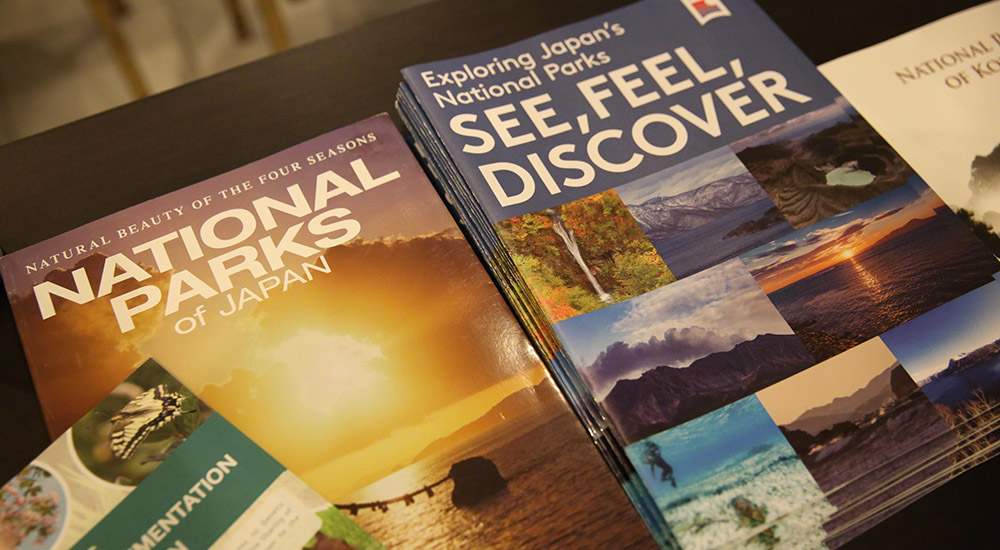
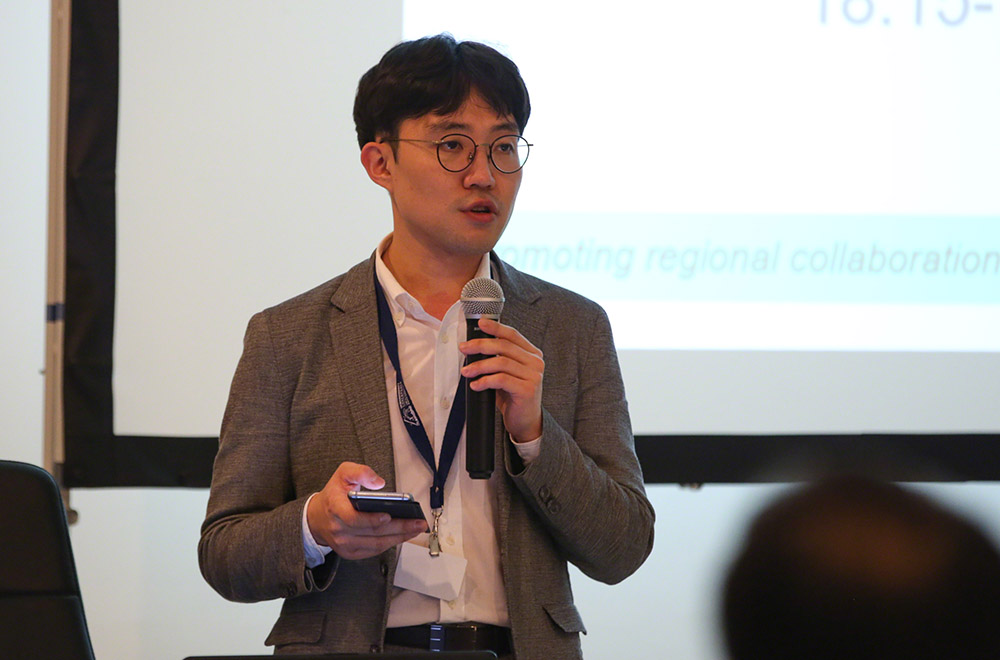
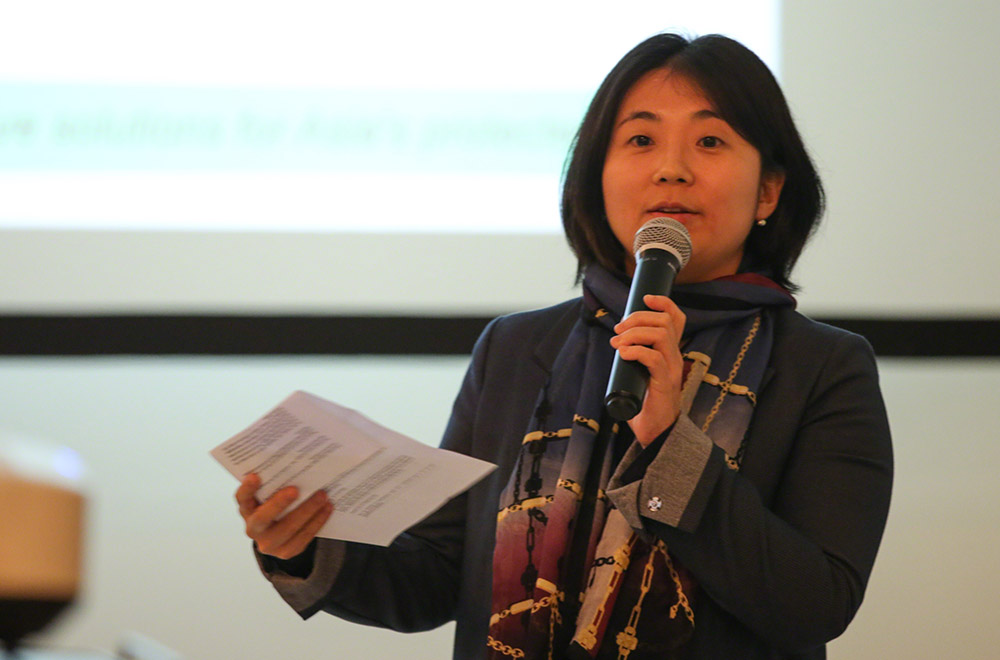

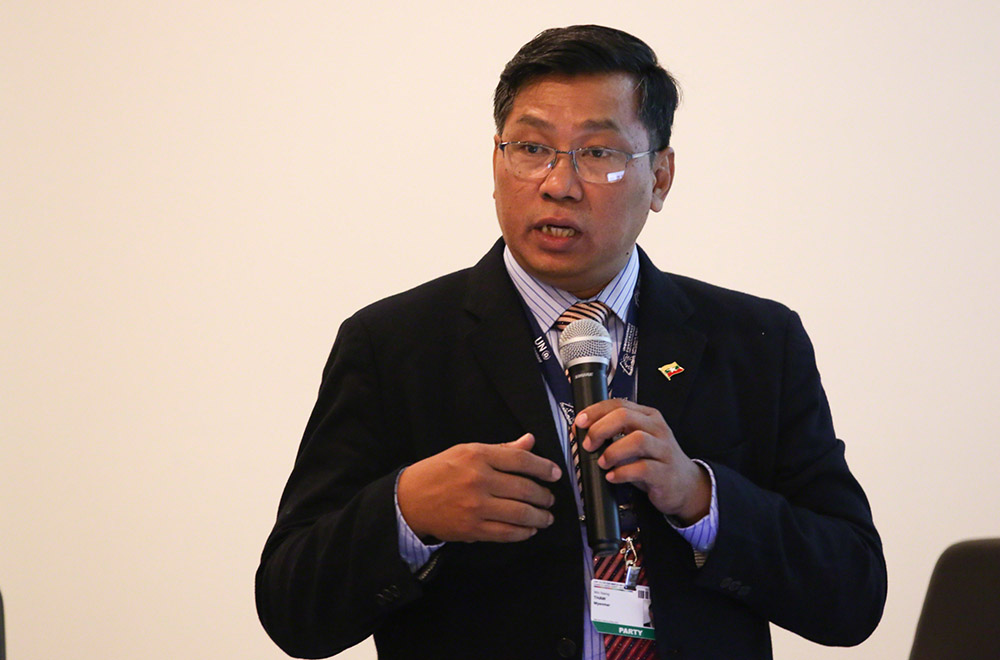

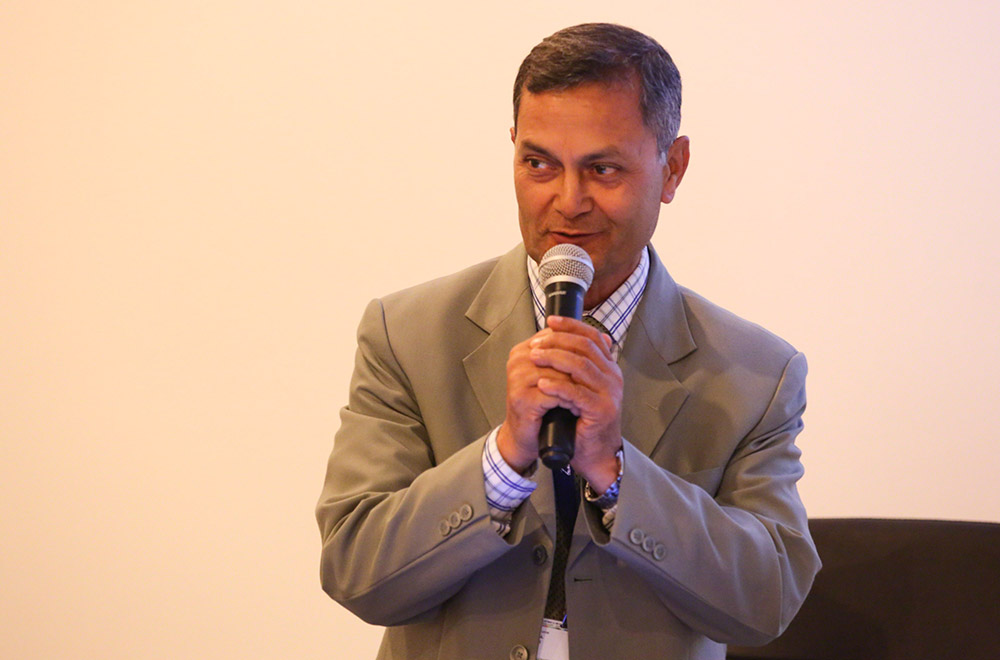
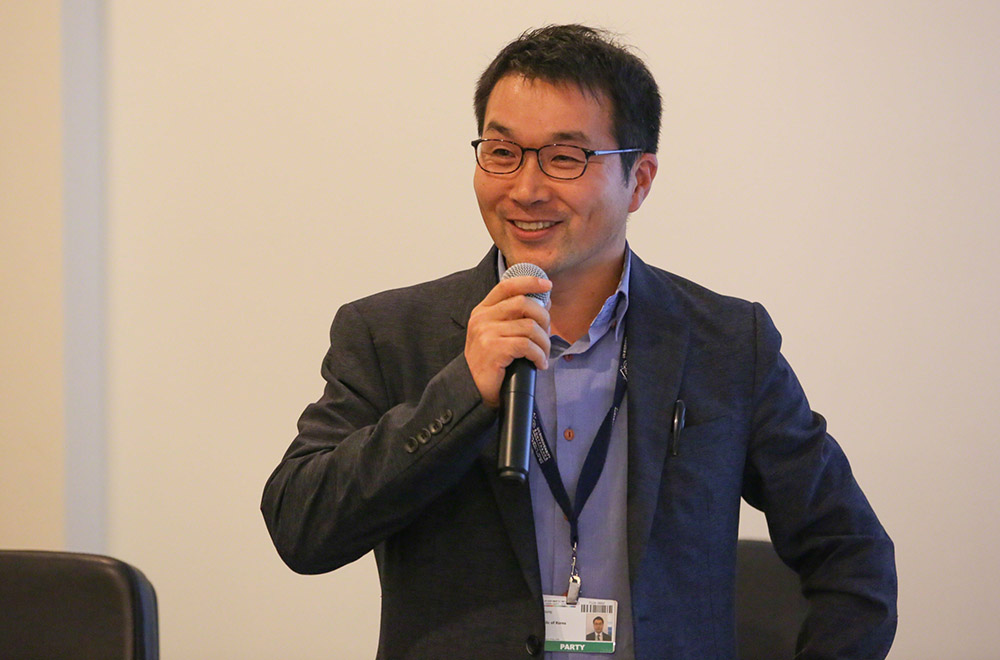

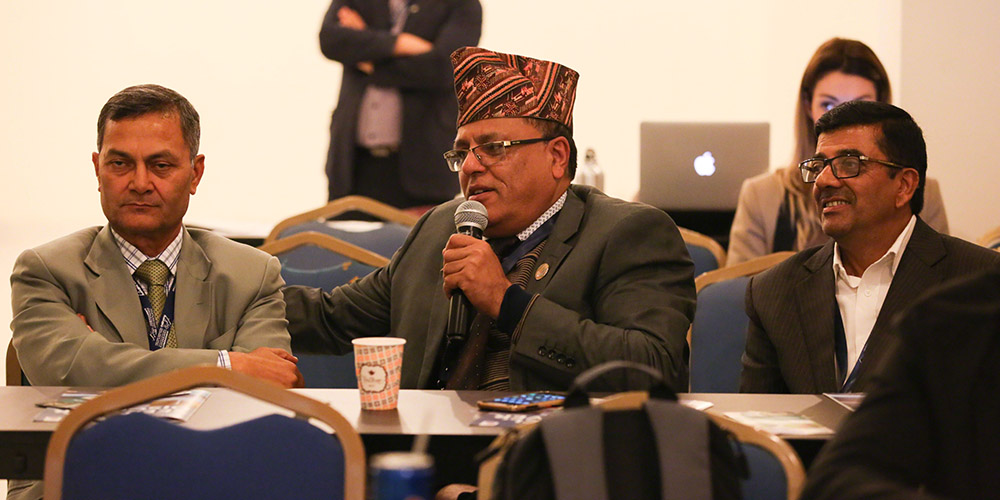
Around the Venue
